Archaeology 50: Victoria Bryant
- 8th December 2019
We come up to date with our look back at 50 years of County Archaeologists in Worcestershire with Victoria Bryant. Victoria took over from Malcolm Atkin as Head of Worcestershire Historic Environment & Archaeology Service and oversaw the merger with Worcestershire Record Office and the move to The Hive.
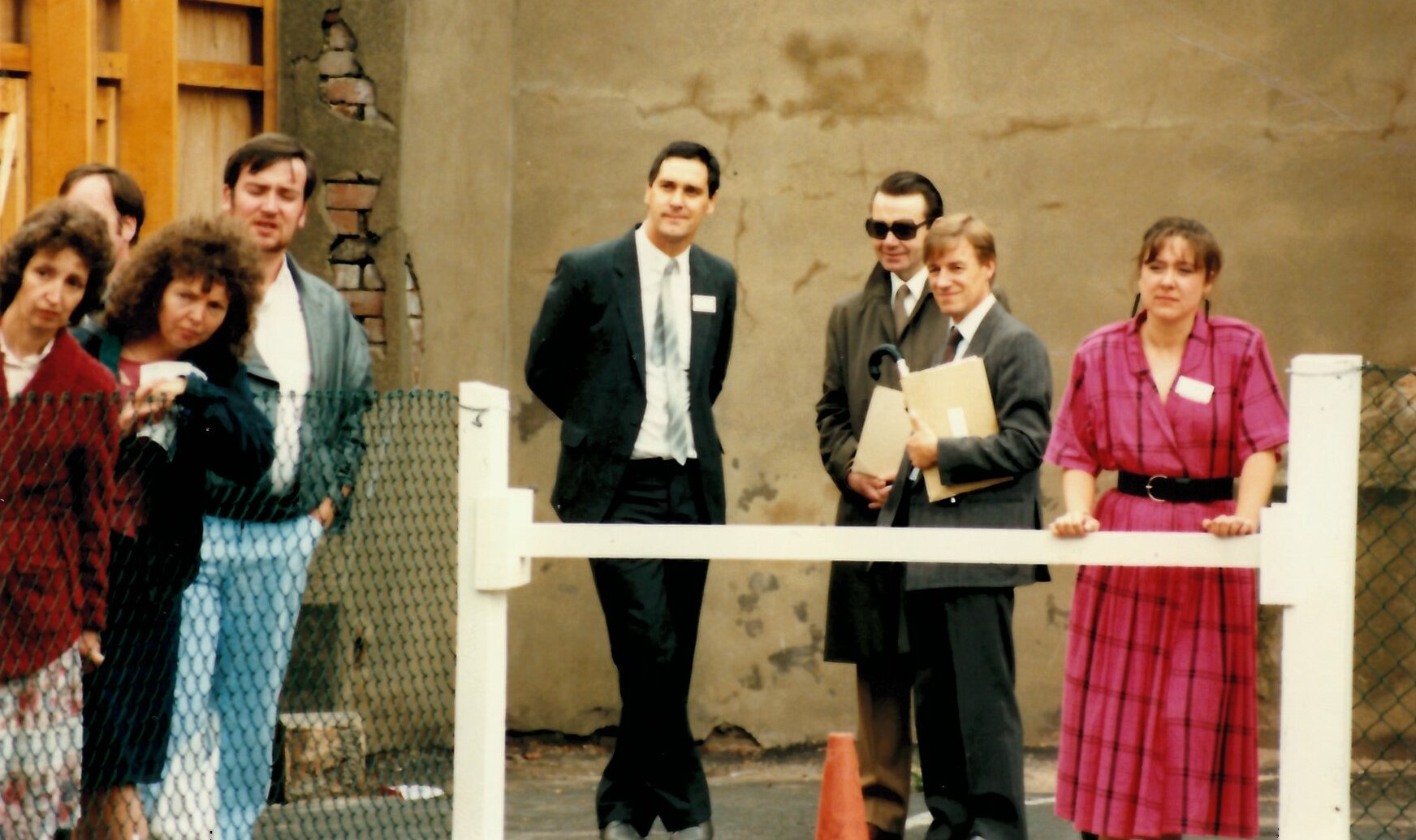
Victoria at Deansway. Adrian Tindall, in in the centre, and Michael Messenger, County Librarian who oversaw the Archaeology service and was a big supporter, in the sunglasses.
I joined Worcestershire County Council in 1988 as the Finds Supervisor on the Deansway excavations, already mentioned by some of my predecessors. My team (one archaeologist and many fantastic volunteers) worked in the old Huntingdon Hall Sunday School. This had pews but no shelving, two bare light bulbs but no heating. Later we moved to the old art college building which was big and light but had no heat. I am not the only archaeologist from 1988 who has refused to leave Worcestershire. My colleagues Robin Jackson and Laura Templeton are still here as was my friend and mentor Hal Dalwood until his untimely death in 2015.

Job advert with Victoria’s post at Finds Analyst – although she is keen to point out she got less than the advertised salary.
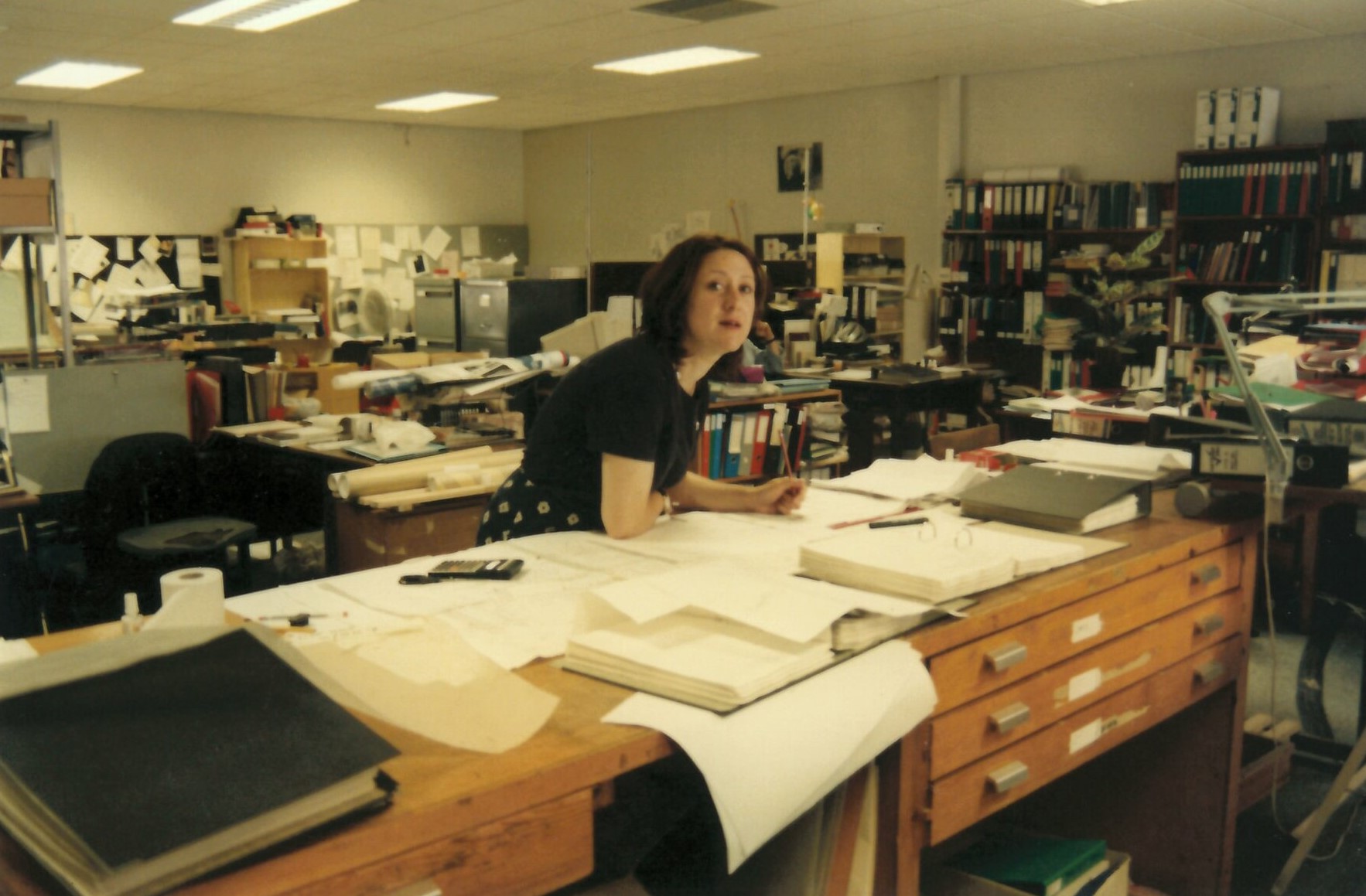
Victoria working on the Deansway report
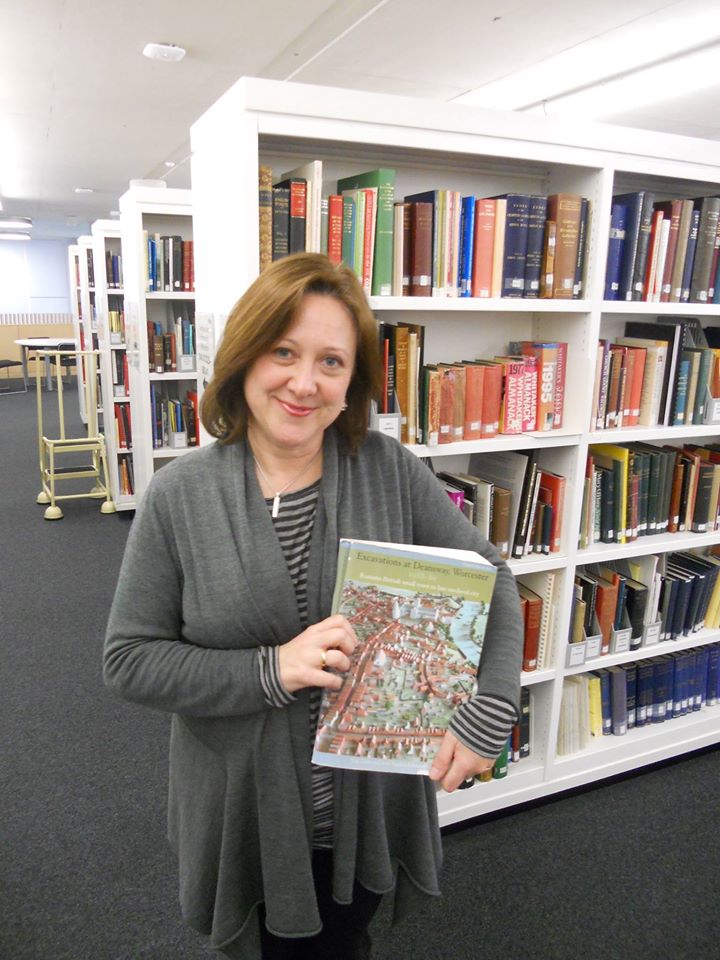
Victoria with the finished report, available in the Local Studies Library in The Hive
Over the years I have done many jobs. At one point I was a half-time finds specialist and a half-time Development Control Archaeologist covering both Herefordshire and Worcestershire. Those were the days.
Working as a planning archaeologist made me realise how little we understood the archaeology of small towns so I was eager to join the English Heritage funded Central Marches Historic Town Survey. Hal Dalwood was the project manager with me as his trusty assistant. We wrote reports on 63 towns in Shropshire, Herefordshire and Worcestershire – fascinating and fun.
Later I managed the Historic Environment Record. Malcom Atkin had procured a GIS (Geographical Information System). This linked data to maps providing amazing new opportunities. There was just one catch – myself and Deborah Overton were a great team but knew nothing about GIS. It was a steep learning curve. Over the next few years the team grew to 7 people and together we created a pretty good HER. The work has been carried on by Emma Hancox and her team who, amongst many other things, have created one of the best HERs in the country.
In 2009, when Malcolm Atkin retired, I applied for his post. This was not great timing. British Archaeology was facing (and still is) huge challenges. The financial crash hit the construction industry hard which led to a downturn in commercial archaeology and redundancies within our commercial archaeology team Worcestershire Archaeology. In addition, local government funding was cut year on year. I was greatly helped in these difficult times by the support of the team and particularly Simon Woodiwiss our Principal Archaeologist. There were good times however. My first year as County Archaeologist was the last time we had a small emergency fund. This allowed us to run a tiny excavation at Bredon where metal detectorists had discovered a hoard of Roman coins buried in a pot. The archaeological context of the find showed that the hoard was buried many years after the last coin had been minted challenging the dating of other UK hoards. We worked with Portable Antiquities and Museums Worcestershire on this and the work formed the basis of a popular exhibition at the Museum and The Hive.
Before Malcolm left I had already been involved in planning the move to The Hive working closely with Lisa Snook of Worcestershire Record Office to ensure the needs of our respective services were met. My greatest worry was that despite state of the art silt traps in our spaces we might block all The Hive drains. It hasn’t happened yet.
In 2012 Worcestershire Record Office and Historic Environment and Archaeology Services merged to become Worcestershire Archive and Archaeology Service based at The Hive and I was the first Manager. Archive colleagues must have wondered just how much use I was likely to be but were very supportive from the start. The reductions in budgets have continued but colleagues have remained positive throughout and the continued success of WAAS is a testament to their dedication and professionalism.
Since 1969 the role of County Archaeologist has changed. Over the years it has become more about facilitating and less about involvement in field work. One thing has not changed since the time of Jan Roberts, however, and that is the constant struggle to keep the service going with fewer resources. Another change is that my role as manager of the Archive and Archaeology Service means that a lot of strategic planning work which was previously undertaken by the County Archaeologist is now the remit of Emma Hancox, Historic Environment Policy and Advisory Manager.
Over the last 9 years my colleagues have worked on a wide range of important excavation, survey, research and community projects. Have a look at the blog archives to get a feel for these.
I am pleased to say that my enthusiasm for archaeology and my admiration for the skill of those who uncover it has not reduced. A beautifully cut section or the perfect excavation of a wooden hurdle makes my heart lift and last year I did manage two days in the field. Working with Worcestershire Archaeological Society and students from the University of Worcester we undertook the first of what I hope will be many community test-pitting projects. Our excavators were Looked After Children. We shamelessly plagiarised (with her agreement) the methodology developed by Carenza Lewis (of Time team fame). I had admired Carenza’s work in East Anglia for many years, but this was the first time we had succeeded in getting some funding and it was great that she joined us for a day. For first time in years I handled a trowel and swung a mattock. What my colleagues thought of my technique I’m not sure but I had the best time.
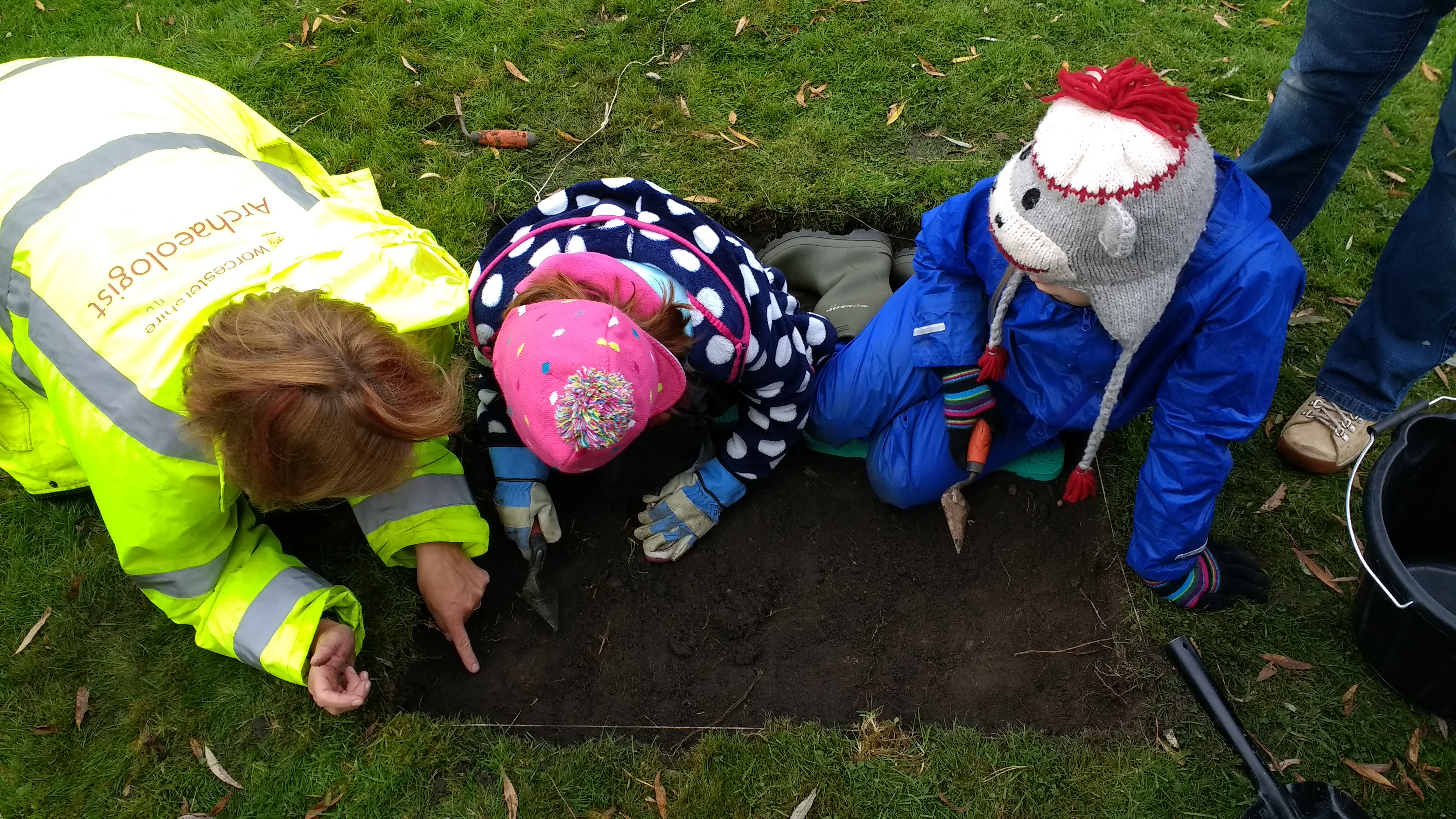
Victoria back in the trenches, helping children on the Community Testpitting Project
Reading through the memories of former County Archaeologists and thinking of my own experience I am aware of many debts of gratitude. That we still have an amazing service with such a high reputation is due to the skills and determination of my predecessors and their colleagues. I am also full of admiration for the archaeological team I manage – full of brilliant committed archaeologists with a passion for what they do – just waiting for me to fall off my perch! The archive team are equally amazing of course.
We also have incredible friends and supporters within Worcestershire County Council, the organisations we work with, people in local communities, and the people who come into The Hive and use our resources.
So, here’s to the next 50 years!
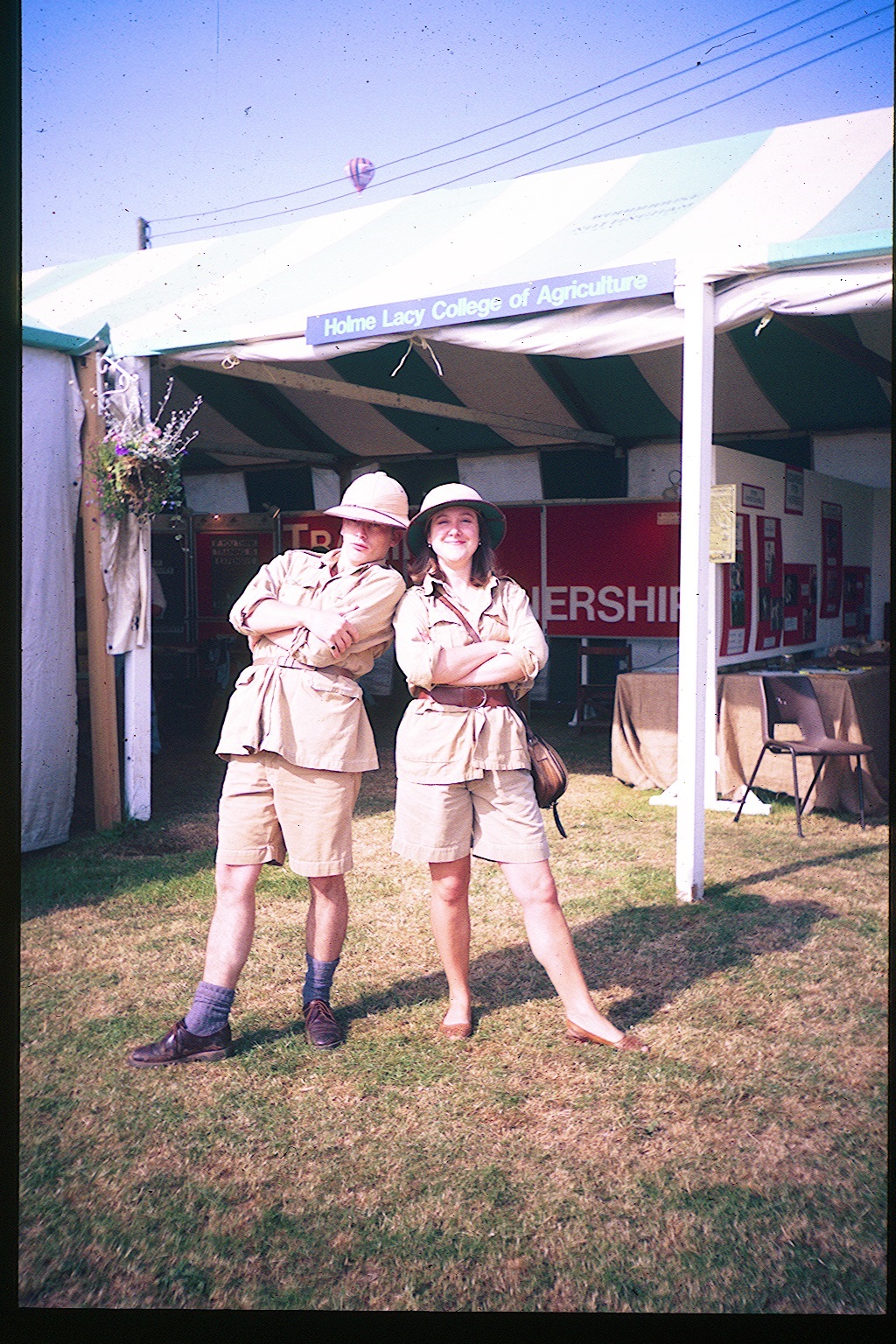
Victoria is always up for fun. Here she is dressed up at the Three Counties Show

Last year as part of recreating photos for Explore Your Archives she even made a cabbage dress!
Post a Comment